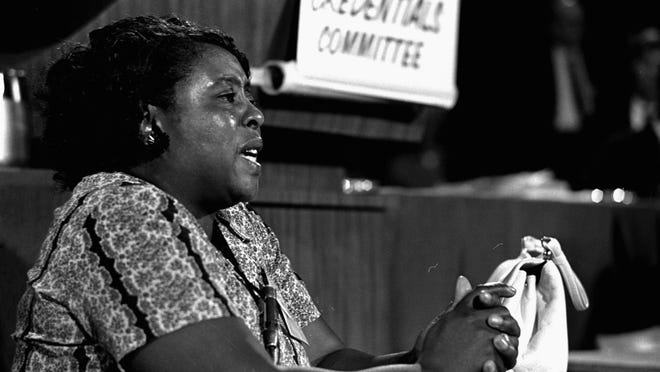Museum's civil-rights exhibits tell stories of courage, perseverance

Sharlene Kranz cried when she walked through the civil rights exhibits at the National Museum of African American History and Culture in Washington.
There were black-and-white photos of people she knew. A video saluting the role of women in the civil rights movement in America.
One million visitors: Smithsonian's new black history museum hits milestone
But it was the timeline showing key moments in that struggle, leading all the way up to the Black Lives Matter movement of the present, that tugged at her heart.
“That was a tour de force,” says Kranz, 70, a civil rights veteran who has visited three times since the museum opened in September. “So much American history made graphic. … It shows change can happen. Change has happened. Change is happening. The sad thing is we had to go through all of that.”

The civil rights exhibit is one of the emotional highlights of the Smithsonian’s newest museum, said its director, Lonnie Bunch.
“You watch different generations tell their story. You watch grandparents come in and talk about what Rosa Parks meant to them or give a sense of their recollection of the Little Rock Nine,” says Bunch. “The civil rights exhibit ... is in the lives of many of the people who come to the museum. There’s a real desire to pass on their story. In a way, the museum is facilitating intergenerational conversations.”
Indiana's pre-Civil War black farming community a Smithsonian surprise
Civil rights veterans say the museum would have been incomplete without a salute to the movement.
“They would have missed almost a half-century of our (history),” says Dorie Ladner, 74, a native of Hattiesburg, Miss., who helped register blacks to vote for the Student Nonviolent Coordinating Committee.
The civil rights exhibit, which takes up an entire floor, includes a restored 40-ton segregated rail car, a tower from Louisiana’s Angola prison and a dress worn by Rosa Parks. It includes the casket of Emmett Till, a 14-year-old Chicago boy murdered in Money, Miss., in 1955 after being accused of flirting with a white woman.

One exhibit showcases the work of the Bogalusa, La., chapter of the Deacons for Defense and Justice, an armed group who defended themselves and civil rights workers against attacks by the Ku Klux Klan in the 1960s.
“I’m happy they glorified the people who did what they did in the 1960s,” Kranz says. “It’s heart-wrenching to know that this country put people through that. This is our legacy as a nation.”
Why you need to see the Emmett Till exhibit at the Smithsonian
Timothy Jenkins, 78, who helped register blacks to vote in Mississippi for SNCC, was disappointed that there wasn’t more of a nod to the locals who helped. “There’s an understatement of some of the struggles and losses and sacrifices that were made at the grassroots level,” he says.
Kranz agrees. “They were so brave as to stand up and fight for their rights and stay there,” says Kranz, who joined SNCC’s voter registration project in Tuskegee, Ala. “These were not people who came for a year and left. These were people born there, who grew up there, who stayed their whole lives there. So to stick their necks out when they did, where they did, was so excruciatingly brave and dangerous.”

Jenkins says he’s sure museum officials are open to modifications. Meanwhile, he’s glad they highlighted the work of activists.
“It’s very good to have people appreciated, especially the martyrs and the people who have lost their lives, who never have been given any attention,” he says. People “only know the names of Dr. King, Goodman, Schwerner and Chaney … But there are countless other people who are also a part of that history.” (James Chaney, Andrew Goodman and Michael Schwerner were three civil rights activists killed by the Ku Klux Klan in Mississippi in 1964.)
Ladner says the exhibit could have featured more about SNCC and other groups, including the Congress of Racial Equality, the Southern Christian Leadership Conference and the Mississippi Freedom Democratic Party, which challenged the state’s all-white party establishment at the 1964 Democratic National Convention.
“We were in the vanguard of the movement,” she says. “A lot of tentacles sprang from SNCC.”
But, she adds, “I was very pleased to see my history on display.”
